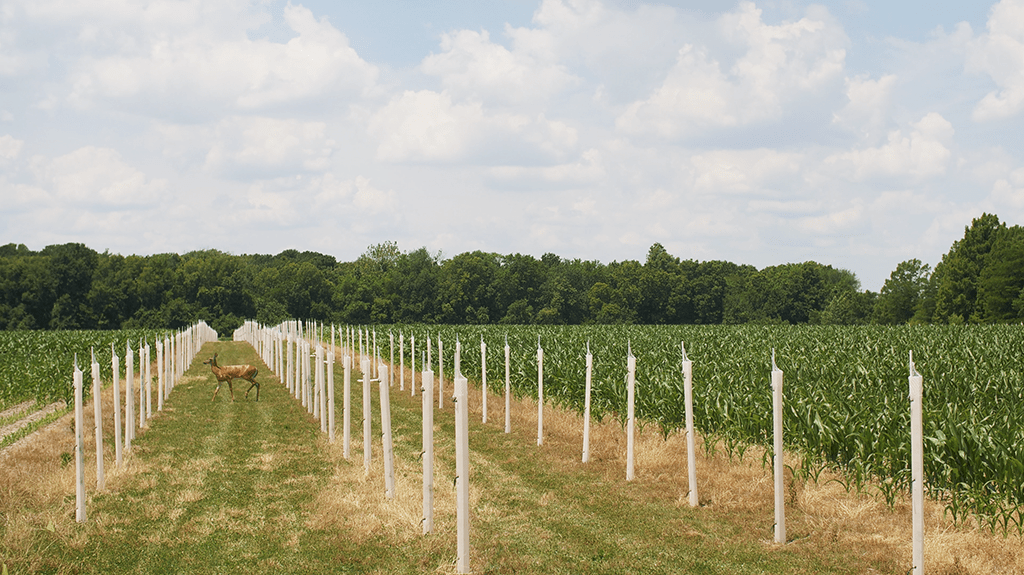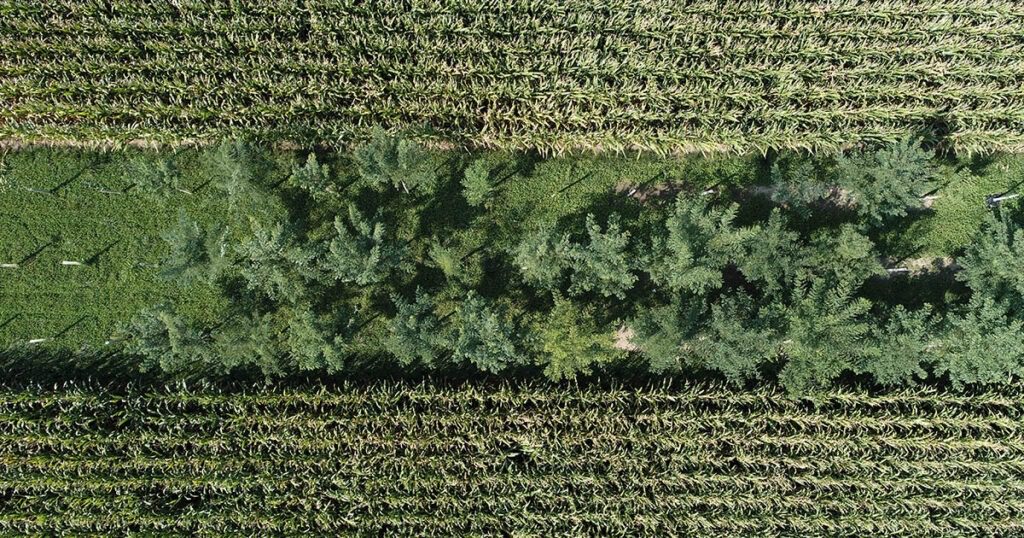Agroforestry is a viable natural climate solution that landowners can adopt right now to increase climate-smart agriculture in the region. Planting trees in pasture, along waterways, and in alley cropping systems resonates with many that want to diversify their farm income while addressing climate change and protecting water. The demand has exposed crucial gaps in educational opportunities, state and local agricultural policy, and staff capacity to provide one-on-one support to farmers and landowners seeking to establish agroforestry projects in this region. The Savanna Institute is working to fill those gaps in Illinois and across the Midwestern US.

From 2020 – 2022, Savanna Institute’s Illinois Agroforestry Team conducted participatory research, education, and outreach in a four-county region in East-Central Illinois with funding support from the Lumpkin Family Foundation. Led by the Illinois Community Agroforester, the Team reached the stewards of 1000 acres of agricultural land in Champaign, Douglas, Piatt, and Vermilion Counties. The goal? To help land stewards plant tree crops in agroforestry systems that will draw down carbon, protect water, grow food, and beautify Illinois for generations to come.

At the same time, the Savanna Institute built its outreach capacity based on community feedback from the project — creating a Community Agroforester position to lead outreach, adding a demonstration site at 4-H Memorial Camp in Allerton Park, and a Technical Service Program to help landowners with farm planning. The Savanna Institute is now accepting applications to enroll landowners in the program. Apply here.

For agroforestry to thrive, it must be a supported polyculture. In the field, that looks like the right combination of plants, trees, and livestock suited to the existing ecosystem and able to access all needed nutrients and resources. Among people, that looks like a network establishing regenerative practices through farming, economic development, social justice, resource allocation, and conservation. The Savanna Institute partners with people and organizations to grow both in Illinois, where it got its start ten years ago this year.
One of the greatest opportunities of the Community Agroforester position has been the ability to create and deepen relationships and partnerships across East-Central Illinois and beyond. Relationships are at the heart of farming, and strong ones take time to develop, often taking years to bear fruit.

